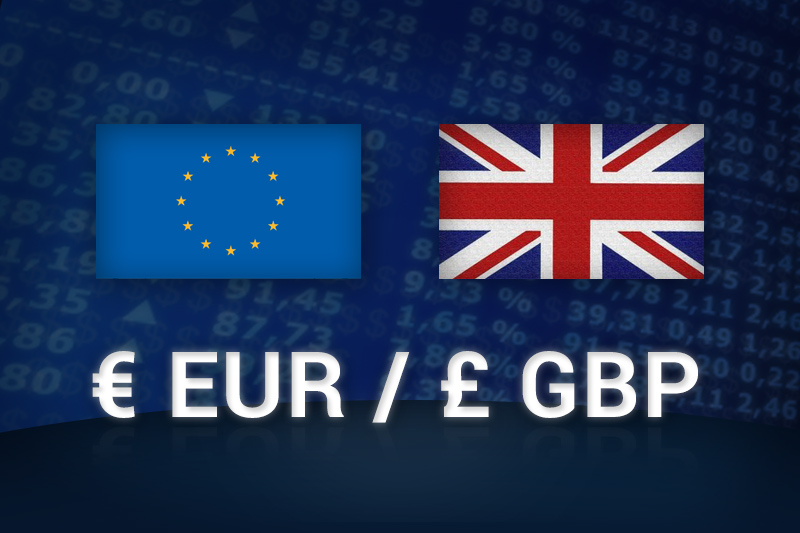Investing.com - The euro rose to a twelve-day high against the pound on Thursday, as globally positive economic data from the euro zone lifted sentiment on the single currency, while concerns over U.S. fiscal policy remained.
EUR/GBP hit 0.8064 during European afternoon trade, the pair's highest since October 31; the pair subsequently consolidated at 0.8053, adding 0.16%.
The pair was likely to find support at 0.8001, Wednesday's low and resistance at 0.8076, the high of October 31.
Official data showed that euro zone gross domestic product contracted by 0.1% in the third quarter, less than the expected 0.2% contraction and following a 0.2% fall in the previous quarter.
A separate report showed that consumer price inflation in the euro zone held steady at 2.5% in October, unchanged from an initial estimate and in line with expectations.
Core CPI, which excludes food, energy, alcohol, and tobacco costs held steady at 1.5%, unchanged from a preliminary estimate and matching forecasts.
Earlier Thursday, official data showed that the pace of Germany's economic growth slowed to 0.2% in the third quarter, following a 0.3% increase in the previous quarter.
Meanwhile, the pound remained under pressure after official data showed that U.K. retail sales fell more-than-expected in October, ticking down 0.08% after a 0.5% rise the previous month.
Analysts had expected retail sales to fall by 0.1% in October.
Elsewhere, investors remained concerned over the looming “fiscal cliff” in the U.S., approximately USD600 billion in automatic tax hikes and spending cuts due to come into effect on January 1.
There are fears the U.S. economy will fall back into a recession, unless a divided Congress and the White House can work out a compromise before then.
The euro was also higher against the U.S. dollar with EUR/USD rising 0.24%, to hit 1.2765.
Later in the day, the U.S. was to release reports on initial jobless claims, consumer price inflation, crude oil stockpiles, in addition to data on manufacturing activity in New York and Philadelphia.
Meanwhile, a speech by Federal Reserve Chairman Ben Bernanke was to be closely watched for any indications on the future possible direction of monetary policy.
EUR/GBP hit 0.8064 during European afternoon trade, the pair's highest since October 31; the pair subsequently consolidated at 0.8053, adding 0.16%.
The pair was likely to find support at 0.8001, Wednesday's low and resistance at 0.8076, the high of October 31.
Official data showed that euro zone gross domestic product contracted by 0.1% in the third quarter, less than the expected 0.2% contraction and following a 0.2% fall in the previous quarter.
A separate report showed that consumer price inflation in the euro zone held steady at 2.5% in October, unchanged from an initial estimate and in line with expectations.
Core CPI, which excludes food, energy, alcohol, and tobacco costs held steady at 1.5%, unchanged from a preliminary estimate and matching forecasts.
Earlier Thursday, official data showed that the pace of Germany's economic growth slowed to 0.2% in the third quarter, following a 0.3% increase in the previous quarter.
Meanwhile, the pound remained under pressure after official data showed that U.K. retail sales fell more-than-expected in October, ticking down 0.08% after a 0.5% rise the previous month.
Analysts had expected retail sales to fall by 0.1% in October.
Elsewhere, investors remained concerned over the looming “fiscal cliff” in the U.S., approximately USD600 billion in automatic tax hikes and spending cuts due to come into effect on January 1.
There are fears the U.S. economy will fall back into a recession, unless a divided Congress and the White House can work out a compromise before then.
The euro was also higher against the U.S. dollar with EUR/USD rising 0.24%, to hit 1.2765.
Later in the day, the U.S. was to release reports on initial jobless claims, consumer price inflation, crude oil stockpiles, in addition to data on manufacturing activity in New York and Philadelphia.
Meanwhile, a speech by Federal Reserve Chairman Ben Bernanke was to be closely watched for any indications on the future possible direction of monetary policy.
